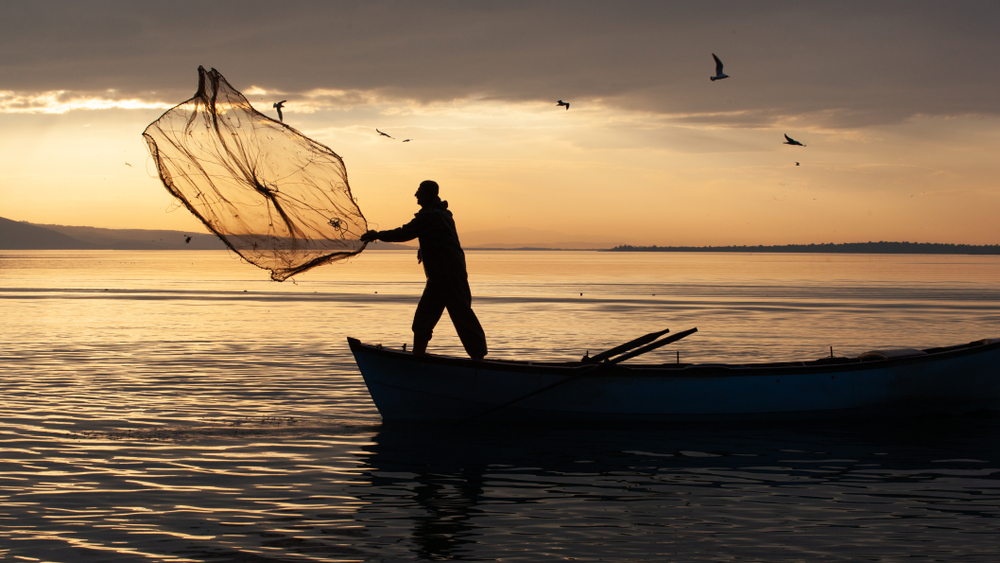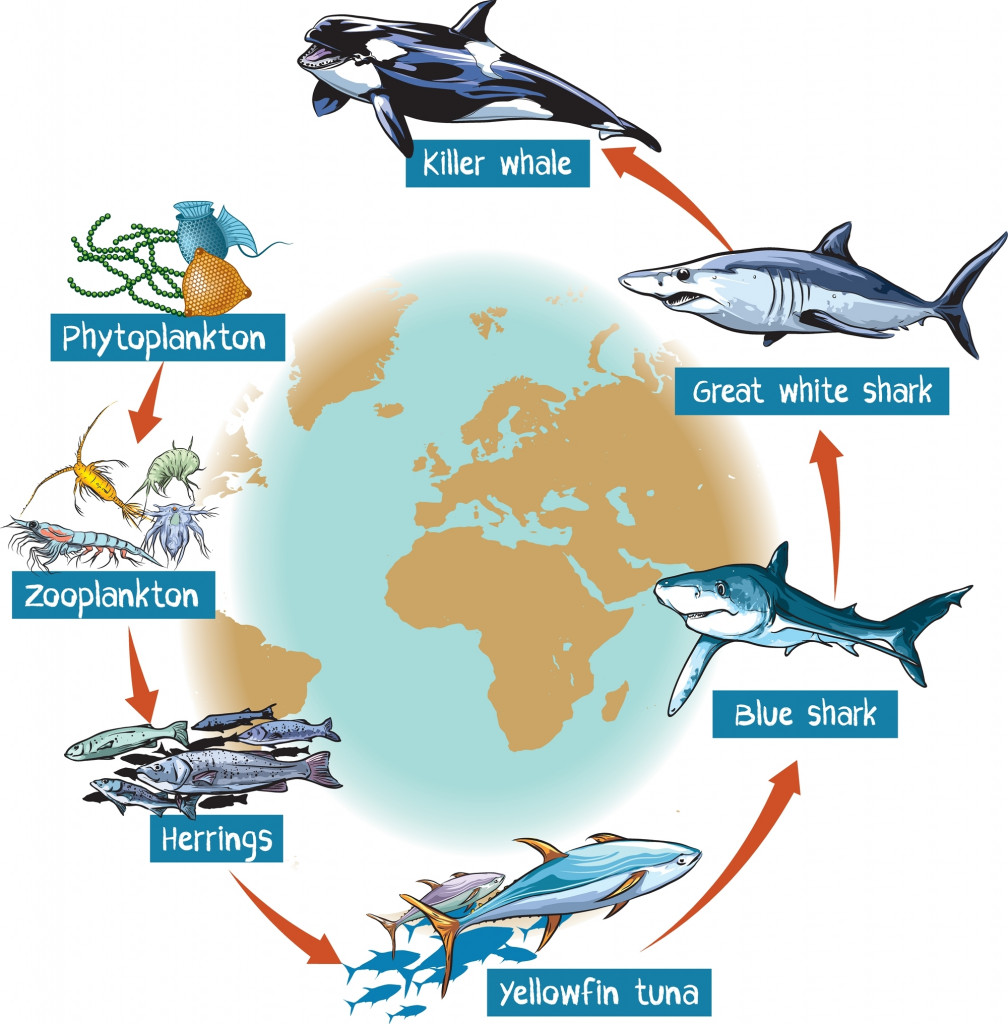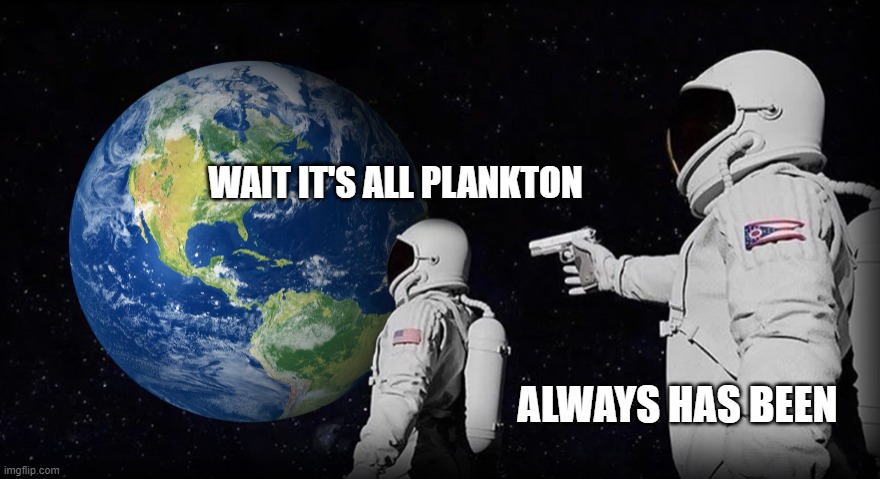Table of Contents (click to expand)
How do we know where the most fish will be in the ocean? Today, satellites are helping us answer that question. Satellites can spot areas of dense algae (that appear as green patches in the water), and where algae is, there is bound to be fish!
Imagine yourself on a boat in the middle of the ocean. The sun’s rays dazzle and shimmer on the water’s surface. You row your old boat to the fishing grounds and peer over the water to see sardines just below the surface, hoping to make your catch for the day.
Fishing has been a part of human life since before civilization was recorded. We slowly went from using hooks and spears and nets to using big boats to drag massive nets across the ocean floor. Over the years, the technology to catch fish has improved in many innovative ways.
But what do you think is the next step?

In this day and age, technology has advanced to the point where we can even find fish from space! This doesn’t mean that we can see fish underwater from space. To get a full understanding of how we find fish from space, we have to understand where fish go.
Moths To A Flame, Fish To Their Food
Fish, like all other animals, need food to live. Many people think of worms as “fish food”, but do you see worms floating around in the middle of the ocean? No! So what exactly do fish eat?
The first step to figuring out where a marine food chain starts is by comparing it to food chains on land. Now, you must be thinking, “Oh! the food chain on land starts with plants!” Indeed, that’s the same for food chains in the ocean.
The beginning of the food chain in any ecosystem is going to be a plant. They are called “primary producers” because they convert raw materials into food through the use of sunlight. Without them, animals would have no source of food and would not exist.
The primary producers of the ocean are algae. Some of them may be large and even look like plants on land, like kelp. However, more often than not, they are tiny and microscopic! All of these different types of algae are collectively called phytoplankton.

These “tiny plants” are eaten by animals that are almost as tiny! These tiny animals are called zooplankton. Now, slightly larger fish eat zooplankton. In turn, even larger fish eat those fish and the cycle goes on. The important thing is that the food chain starts with phytoplankton. The rest of the ecosystem is determined by where the phytoplankton are.
Now, unlike plants on land, phytoplankton won’t always be in the same location… so how do we find out where the phytoplankton are?
Also Read: What Is A Food Chain? Who Are Producers, Consumers And Decomposers In A Food Chain?
Searching For Plankton From Space
The location of phytoplankton is always going to keep changing. These tiny organisms are carried by the current from one place to the next and leave a trail of breadcrumbs, allowing the rest of the marine animals to follow them.
However, if it’s difficult to track fish using satellites, how would you be able to track microscopic plants? Well, the key lies in the word “plants”.
Plants are differentiated from animals because they make their own food through photosynthesis. To perform photosynthesis, they need chlorophyll. Phytoplankton, just like all other plants, need chlorophyll; it is this pigment that helps us search for these plants all the way from space.

Chlorophyll is a pigment that absorbs red and blue light. Now, if there is a giant patch of phytoplankton in the ocean, two things will happen. Firstly, you will find large amounts of fish there, because that patch of phytoplankton essentially means more food for more fish. Secondly, a lot of red and blue light will be absorbed by the phytoplankton.
Satellites have very specific and sensitive sensors. These sensors detect changes in the amount of absorbed light and tell us where the phytoplankton can be found. Satellites can help us pinpoint these places on a map.
Additionally, there is a higher concentration of phytoplankton if more light is absorbed. This means that more fish would come to these areas, making them a better area for fishing than others.
Also Read: What Are Phytoplankton?
A Final Word
Now, with the help of satellites, fishermen can find their fishing grounds with more ease. Most people would ask, “Won’t this harm ecosystems?” That would be true if fishermen owned their personal satellites to help them. Unless Jeff Bezos or Elon Musk decide to get on a boat and sail the seven seas, I think our oceans are safe from any space-based exploitation.
So, how exactly do satellites help fishermen and will our oceans be safe? Lucky for us, most satellites are government owned, often through private partnerships. This means that the data on where to go fishing is owned by governments.
This is currently being used in the coastal states of many different countries, including India. The use of three satellites, namely the NOAA-AVHRR, Oceanstat2 and MODIS-AQUA satellites are helping with this venture. This is helping fishermen and protecting the environment through a two-way collaborative understanding between the government and the people.
Also Read: Is There A Way To Clean Up All The Space Junk?
How well do you understand the article above!

References (click to expand)
- Santhanam, H., & Kundu, S. K. (2022, March). Assessment of Socio-technical Constraints of Marine Fishers in the Utilisation of Marine Fishery Advisories in Southern Odisha, India. Anthropocene Science. Springer Science and Business Media LLC.
- Potential Fishing Zone (PFZ) Advisory - incois. Indian National Center for Ocean Information Services
- 3 ways satellites connect scientists with ocean life - NOAA. The National Oceanic and Atmospheric Administration
- Elements of Marine Ecology - 5th Edition - Elsevier. Elsevier
- EA Engel. Satellite Remote Sensing of Chlorophyll: Significance of PAR .... The University of Washington
